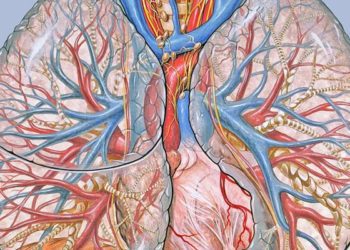Improved adherence but worsening disparities in follow-up after cardiovascular hospitalizations
1. In this retrospective cohort study, it was found that timely follow-up after hospitalization for acute myocardial infarction and heart failure grew significantly between 2010 and 2019.
2. Despite overall higher rates of follow-up, racial and socioeconomic disparities became more pronounced over the study period.
Evidence Rating Level: 2 (Good)
Study Rundown: Care coordination has been shown to be a key factor in improving medication adherence and reducing hospital readmissions for patients after acute myocardial infarctions (AMI) and heart failure (HF). In recognition of this potential benefit, the Center for Medicare and Medicaid Services (CMS) implemented transitional care management (TCM) in 2013, a bundled payment program which offers financial incentives to outpatient clinicians for visits within 30 days of discharge. While studies prior to the implementation of such programs found that only approximately half of patients received a follow up within 14 days, more recent trends in post-discharge follow-up have not yet been well-characterized. This retrospective study was designed to examine the rates of follow-up after cardiovascular hospitalizations from 2010 to 2019 and identify changes in disparities in care over this period. Substantial improvements in both overall and cardiology-specific follow-up were observed, but the actual rates of follow-up remained fairly low, with over one-third of patients with AMI and one-half of patients with HF not being seen by a cardiology clinician within 30 days. Further, disparities in follow-up appeared to worsen for many at-risk subgroups, including patients who were Black, Hispanic, and Medicaid dual-eligible. This study was limited by the lack of inclusion of commercial or Medicare Advantage populations as well as unbilled telehealth follow-ups. Overall, these results suggest that post-discharge follow-up after cardiovascular hospitalization has increased over the years, but barriers to equitable care may still exist.
Click to read the study in AIM
Relevant reading: Disparities in postdischarge ambulatory care follow‐up among Medicaid beneficiaries with diabetes, hospitalized for heart failure.
In-Depth [retrospective cohort]: CMS administrative inpatient and outpatient claims were examined for all HF and AMI patients continuously enrolled in Medicare, excluding those whose hospitalization resulted in death or hospice. There were approximately 1.7 million hospitalizations for AMI and 4.2 million for HF between 2010 and 2019. The rate of cardiology follow-up for AMI increased from 48.3% to 61.4% across this period, and the rate of cardiology follow-up for HF also increased from 35.2% to 48.3%. Visits with advanced practice clinicians grew from 3.0% to 14.8% of total visits among patients with AMI, and from 2.4% to 13.1% among patients with HF. When including primary care visits, the follow-up rate increased from 70.6% to 79.7% among patients with AMI, and from 64.0% to 71.2% among patients with HF. Patients with HF consistently had lower rates of follow-up compared to those with AMI. A total of 7.1% and 11.0% of AMI and HF patients who underwent cardiology follow up were readmitted or died in the 30 day follow up period. While rates of follow-up for AMI increased across all cohorts, the largest disparities were seen between Black and White patients (51.9% vs. 59.8%; difference, 7.9 pp [CI, 6.8 to 9.0 pp]) and Medicaid dual eligible and non-dual eligible patients (52.8% vs. 60.4%; difference, 7.6 pp [CI, 6.9 to 8.4 pp]). Rates of follow-up also increased for all HF patients, with the largest disparities again seen between Black and White patients (39.8% vs. 48.7%; difference, 8.9 pp [CI, 8.2 to 9.7 pp]) and Medicaid dual eligible and non-dual eligible patients (39.7% vs. 49.4%; difference, 9.6 pp [CI, 9.2 to 10.1 pp]). Increasing disparities were seen among Asian, Pacific Islander, Black, and Hispanic patients. Overall, this study found increases in both rates of follow-up and disparities in follow-up after cardiovascular hospitalization.
Image: PD
©2024 2 Minute Medicine, Inc. All rights reserved. No works may be reproduced without expressed written consent from 2 Minute Medicine, Inc. Inquire about licensing here. No article should be construed as medical advice and is not intended as such by the authors or by 2 Minute Medicine, Inc.







